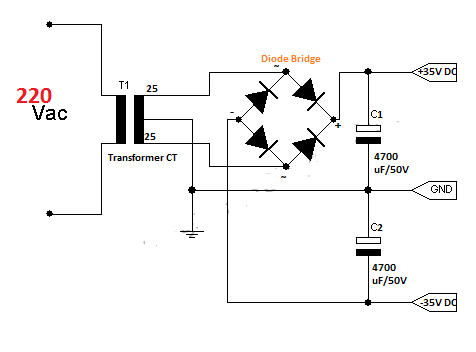Amplifier is a device to increase the power of signal by using external energy sources. It can be used to strengthen the voice of a musical instrument or other sound source to connect the speaker on its output.
This is a simple Amplifier which is built with LM741, transistors are connected in such a way that produces 50W of power.
For good operation, the circuit requires a symmetrical power supply (+30 V and-30V) with a range of 3A of current( for mono, if you want stereo use power supply with 5A of current).
The circuit above are C1 = 4.7 uF at the input, if you want to lower frequency signals that increase the value of C1, or if you want to strengthen the higher frequency signals then decrease the value of C1. Potentiometer (R9) to adjust output signal of amplifier ( frequency and amplitude). Input (IN) of the circuit can also be a signal from signal generator.
List of Components :
R1,R4 =1K ; R2, R8 = 50K ; R10, R12, R13, R15 = 50 ohm ; R3, R6 = 2K ; R5,R7 = 15K ; R11, R14 = 500 ohm ; R9(Potentiometer) = 1K ; C1 = 4.7uF/25V ; C2 = 100uF/25V ; C3,C5 = 47uF/25V ; C4 = 10 pF (ceramics) ; D2,D3 (Zener) = 15V ; D1,D4 = 1N4148 ; T1 = 2N3055 ; T2 = 2N2955 ; T3 = 2N4037 ; T4 = 2N3053; IC= LM741
Note: We can substitute components with other components that have the same specs.




 07:22
07:22
 Unknown
Unknown





















